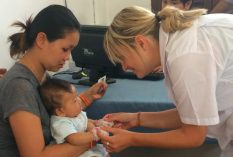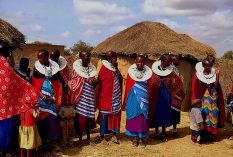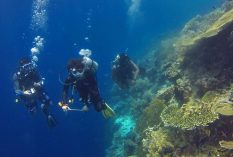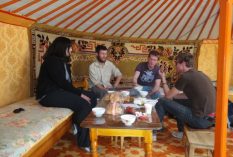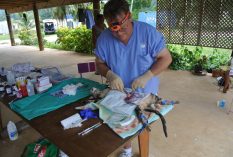A pick-up truck was waiting for me in Campo Grande. It was covered by a thin layer of red dust, coming from what they call “terra roxa”, purple soil. Forget asphalt. This sand, whose colour is given by the presence of iron, is what most roads are made of.
Our adventure began and by the evening we were in Taboco, a small village in Mato Grosso do Sul. In fact, even though I am working with WCS to monitor Pantanal’s wildlife, in particular peccaries, most of the research is not being conducted in the Pantanal itself, but in the surroundings, the so-called Cerrado. But don’t worry: we are still dealing with the same deforestation issues and the same endangered species! And there’s still plenty of work to do, in any case.
Chasing peccaries
Monitoring peccaries means conducting a number of various activities, which will give us information on the different aspects of the ecosystem. In the past days, we have been setting and getting back hidden cameras from the forest, preparing cages to capture animals, determining the position of peccaries that were given GPS collars, and rescuing some of these collars. These activities allow us to understand where the animals are and where they move to.
Manmade deforestation divided the original forest into detached pieces, like small islands, and our beloved peccaries move from one to the other. By mapping peccaries, we will try to understand which areas they like and what corridors they use to get from one forest fragment to another. More specifically, the cameras tell us if there are peccaries in the selected area. If so, cages are set and the peccaries are captured. The next step is to put GPS collars on them to precisely track their movements. Once the batteries of the collars are low, we get them back.
Mosquitoes and ticks
These fieldwork activities seem easy and straightforward, right? I can guarantee they are not. First of all, it’s hot and there is no breeze. Such conditions can make the electronic equipment feel “dizzy”, so that they don’t work properly. In addition, for our own good, we need to wear long sleeves and trousers -which make us sweat even more. They will protect us from scratches, stings and bites from mosquitoes and ticks. Mosquitoes are now under the spotlight for Zika, but they can also carry yellow fever, dengue, and chikungunya. Plus, we all know how annoying and itchy their bites are.
Ticks are no better. Call it climate change, call it unusual autumn, but this year the “tick bombs” are already attacking. They are dozens, hundreds of tick larvae -baby ticks- that you would stumble upon while walking: they may look like dirt, they are on grass and leaves, and they will stick to your socks and jeans. They are going to crawl on you before you even know it. If you pay attention, after a short walk in the forest you’ll be able to spot them on your jeans. At this point you have a choice: either you remove all of them from your trousers with duct tape, or you’ll have to remove each one of them from your skin afterwards.
Despite having stepped on quite a few tick bombs in the past days, I was lucky enough to get only one tick. Beginner’s luck or unappetizing blood? I guess we’ll figure it out in the next days…



